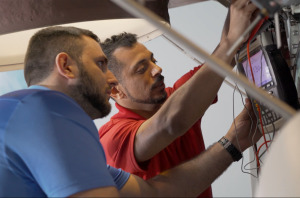by
John R. Fischer, Senior Reporter | September 20, 2023

ISOs today are offering more customized service agreements, rather than just full-service ones. (Photo courtesy of 626 Holdings)
As margins grow tighter, many healthcare providers are seeking cost-effective ways to reduce their overhead, while still providing quality care. Partnering with a reputable independent service organization for equipment maintenance has always been a viable option for cutting expenses, and ISOs are increasingly offering more tailored service agreements, meaning more customized options rather than a one-size-fits-all maintenance program.
For example, a hospital may have an in-house engineering team to perform preventive maintenance on its CT scanner but lack an inventory of replacement parts for it, such as CT tubes. Signing a parts-only agreement with an ISO provides access to replacement components and parts, without having to sign up for other services they are capable of handling in-house.
“Customers need to cut costs and are willing to take on more risk if it means decreasing their service expenses,” Don McCormack III, chief sales officer for California-based SouthWest Medical Resources told HCB News. SWMR specializes in MR, CT, and PET/CT scanners, and has a warehouse with over 20,000 GE HealthCare parts.



Ad Statistics
Times Displayed: 174439
Times Visited: 3180 For those who need to move fast and expand clinical capabilities -- and would love new equipment -- the uCT 550 Advance offers a new fully configured 80-slice CT in up to 2 weeks with routine maintenance and parts and Software Upgrades for Life™ included.
HCB News sat down with four ISOs to discuss the factors a provider should consider when negotiating a CT parts and service agreement, and the benefits and limitations that come with different types of arrangements.
Establishing a mutually beneficial relationship
While equipment manufacturers (OEMs) are more than capable of providing excellent service on the systems they’ve built, that expertise and organizational footprint may come at a cost that smaller providers simply cannot afford. According to Kevin Gill, chief revenue officer for 626 Holdings, ISOs have a lower fixed cost base and are more agile due to having fewer financial obligations. His company services CT systems from GE HealthCare, Siemens Healthineers, Philips, Hitachi, and Toshiba (now Canon).
“I would be more than happy to go into a hospital or imaging center and just get their CT, whereas an OEM or a large ISO is going to walk into that and say, ‘If I can’t get a million dollars out of this place, I'm not playing.’ Hungrier ISOs can live on slivers of a customer’s fleet,” Gill said.
Although lobbyists representing the interests of OEMs have tried to make a case that ISOs are dangerous, a 2018 report by the FDA found objective evidence “not conclusive” to determine independent servicers pose a safety threat or require additional regulation. In 2021, the FTC published a report based on a two-year investigation that supported the right to repair, and found little evidence to support justifications manufacturers have used to hamper competition.

